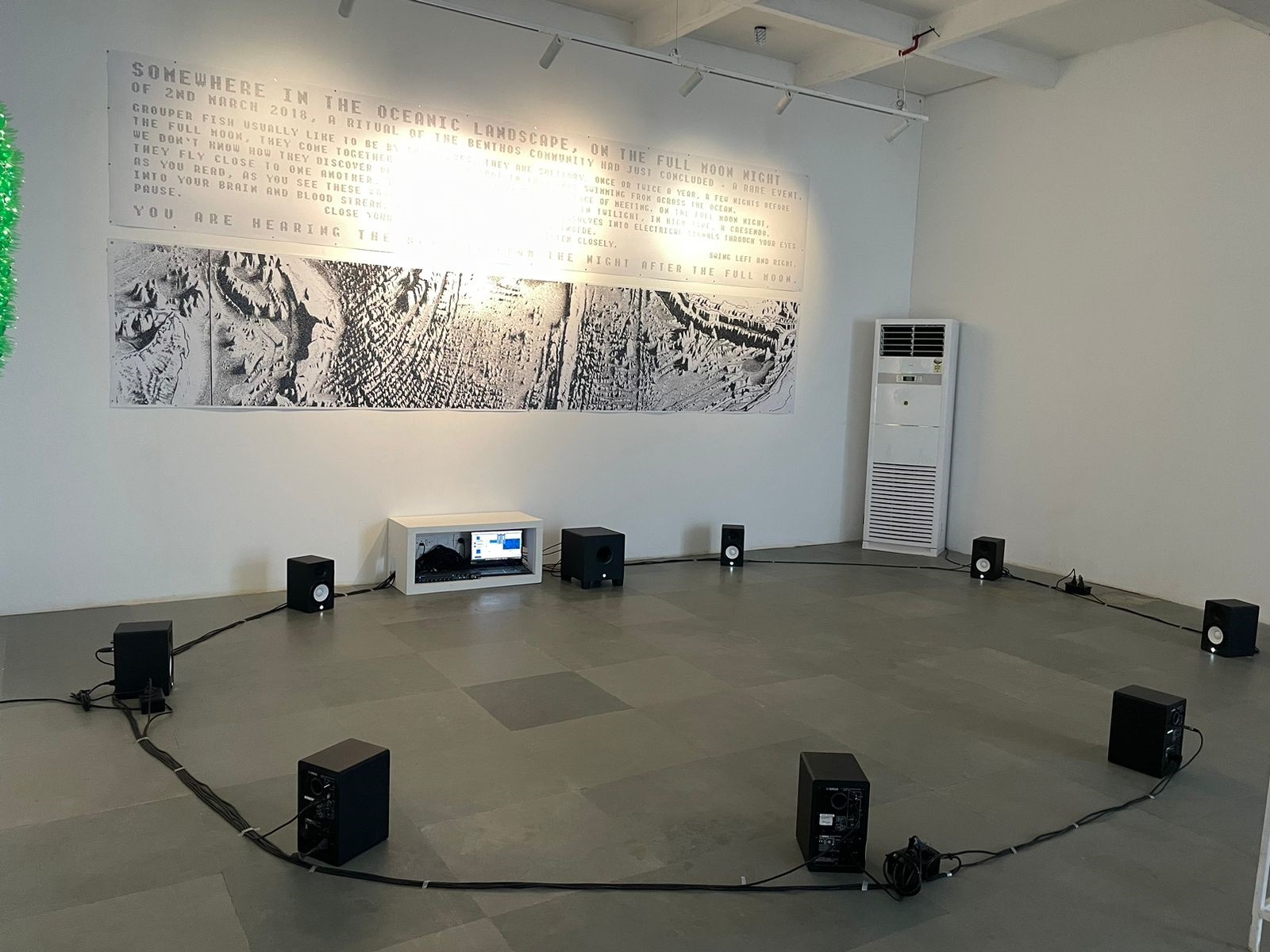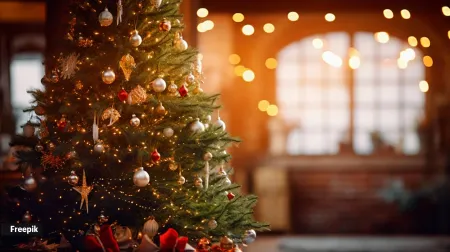Blue carbon takes centerstage as Goa exhibition reveals hidden aspects of climate crisis
At the Old PWD Complex in Panjim, an exhibition, called Blue Carbon, features songs that are not heard on land or, unless one is waiting for it, even in deep water. It is the sound made by tiny reef fish and has been recorded by Goa-based marine biologist Vardhan Patankar, who has been diving since 2005.
While there is significant work on marine mammal bioacoustics, there is limited information on reef fish acoustics, a healthy reef is quite noisy. “Reef fish are sentient beings who are extremely vocal about signalling or mating, making sounds like any herbivore predator but at a very low frequency of 10 Hertz, which is below the human hearing capacity,” says Patankar.

He recorded the sounds on display at Grand Island and St George Island in Goa by placing a hydrophone in a natural system. The display represents the only such recording of its kind from India and one of the richest experiences of the show.
Water as a Carbon Sink
The aim of the display, which is a part of the Serendipity Arts Festival, is to draw visitors’ attention to a relatively new aspect of the climate crisis — the role played by marine ecosystems in removing carbon from the atmosphere.
Traditionally, people have considered trees and forests as crucial solutions to global warming as they absorb carbon dioxide. Since the term “Blue Carbon” was coined by researchers in 2009, growing research has revealed that coastal ecosystems, rich in seagrass, mangroves, phytoplankton, and corals, are more active in removing carbon than forests. Seagrass alone is estimated to remove carbon 30 times faster than a rainforest.
 With water being one of the main features of Goa, the exhibition is site-specific
With water being one of the main features of Goa, the exhibition is site-specific
Science meets Art
The exhibition is a collaboration between Patankar and Goa-based artists Kaldi Moss, Waylon D’souza, and curated by Ravi Agarwal and Jahnavi Phalkey of the Science Gallery Bengaluru. The effort to coalesce science with art to create engaging and interactive works is evident as soon as one enters the room. A major exhibit is a large mural of a seascape of anemones and corals, among others, which D’souza has created with 36 artists based in Goa.
With water being one of the main features of Goa, the exhibition is site-specific. The artists and Patankar met regularly in person and with the extended team over Zoom to create a show that would be relevant and accessible. With the world registering its hottest summer since records began in 1880, there is widespread concern about anthropogenic climate change, but regular people rarely have a way to understand its deeper aspects. The exhibition reached out to them.
“With the changing nature of research and its distance from everyday life, it is urgent to put cutting-edge research into the public domain. Carbon has become the currency of the dialogue on climate change, with terms such as carbon sequestration, carbon sinks, and carbon credits. We thought that, instead of talking about climate change, let’s talk about carbon. Let’s approach it from the beginning of life on this planet to firmly establish the complexity of the question. Carbon isn’t a villain. Carbon dioxide in excess is the problem,” says Phalkey. “We live on the blue planet, and all this water continually captures carbon. To spread the message of the magic that are ecological phenomena is really the idea behind the exhibit,” she adds.
Disclaimer: The copyright of this article belongs to the original author. Reposting this article is solely for the purpose of information dissemination and does not constitute any investment advice. If there is any infringement, please contact us immediately. We will make corrections or deletions as necessary. Thank you.





